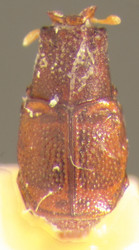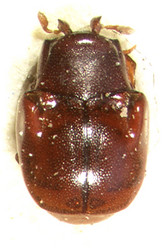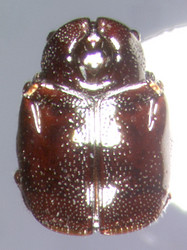Pheidoliphila
Michael S. Caterino- Pheidoliphila acutistria Dégallier & Caterino
- Pheidoliphila arriagadai Dégallier & Caterino
- Pheidoliphila bifida Dégallier & Caterino
- Pheidoliphila carbo (Lea)
- Pheidoliphila dahlgreni Dégallier & Caterino
- Pheidoliphila finnigana Dégallier & Caterino
- Pheidoliphila granulata (Lea)
- Pheidoliphila kapleri Dégallier & Caterino
- Pheidoliphila lackneri Dégallier & Caterino
- Pheidoliphila macmillani Dégallier & Caterino
- Pheidoliphila magna Dégallier & Caterino
- Pheidoliphila micra Dégallier & Caterino
- Pheidoliphila minuta Lea
- Pheidoliphila oharai Dégallier & Caterino
- Pheidoliphila penatii Dégallier & Caterino
- Pheidoliphila pseudocephala (Lea)
- Pheidoliphila ruginota Dégallier & Caterino
- Pheidoliphila rugosa Dégallier & Caterino
- Pheidoliphila secqi Dégallier & Caterino
- Pheidoliphila sternalis (Blackburn)
- Pheidoliphila storeyi Dégallier & Caterino
- Pheidoliphila suturalis Dégallier & Caterino
- Pheidoliphila unita Dégallier & Caterino
- Pheidoliphila verityi Dégallier & Caterino
- Pheidoliphila wenzeli Dégallier & Caterino
- Pheidoliphila yelamosi Dégallier & Caterino
Introduction
Pheidoliphila, occurring in temperate parts of Australia, was among the earliest recognized genera of Chlamydopsinae (Lea 1914). Its name refers to the association of some species with ants in the genus Pheidole. Of the 26 known species of the Pheidoliphila, host records are available for only five of the species, and the host of one of these (Pheidophila sternalis) is the ant Rhytidoponera. So the name cannot be taken too literally.
Characteristics
The most reliable character identifying members of Pheidoliphila is the position of the elytral trichome, restricted to the humeral corner, though it has been lost in a few species. In these, and in most of the others, a prominent projection is present on the front of the pronotum. In many species this is strongly and strangely developed, forming an anterior horn, or in some appearing to form a rounded pair of horns. In this latter case (as in P. verity, pictured above), it has been suggested that the entire body of the beetle mimics the shape of an ant head, with these horns representing the ant's mandibles.
References
Dégallier, N., and Caterino, M. S. 2005b. Notes taxonomiques sur les Chlamydopsinae et descriptions d’espčces nouvelles. - II. Genre Pheidoliphila Lea. Bulletin de la Societe Entomologique de France 110:463–494.
Lea, A. 1914. On Australian and Tasmanian Coleoptera with descriptions of new species. Part II. Proceedings of the Royal Society of Victoria 26 (n.s.), 211–227.
Information on the Internet
- Color images of all species. Supplement to descriptive paper, hosted by M. Caterino and the Santa Barbara Museum of Natural History.
Title Illustrations

| Scientific Name | Pheidoliphila micra |
|---|---|
| Specimen Condition | Dead Specimen |
| Identified By | Michael S. Caterino |
| Collection | Museum National de Histoire Naturelle, Paris |
| Type | Holotype |
| Image Use |
 This media file is licensed under the Creative Commons Attribution-ShareAlike License - Version 3.0. This media file is licensed under the Creative Commons Attribution-ShareAlike License - Version 3.0.
|
| Copyright |
©

|
| Scientific Name | Pheidoliphila minuta |
|---|---|
| Specimen Condition | Dead Specimen |
| Identified By | Michael S. Caterino |
| Image Use |
 This media file is licensed under the Creative Commons Attribution-ShareAlike License - Version 3.0. This media file is licensed under the Creative Commons Attribution-ShareAlike License - Version 3.0.
|
| Copyright |
©

|
| Scientific Name | Pheidoliphila verityi |
|---|---|
| Specimen Condition | Dead Specimen |
| Identified By | Michael S. Caterino |
| Type | Paratype |
| Image Use |
 This media file is licensed under the Creative Commons Attribution-ShareAlike License - Version 3.0. This media file is licensed under the Creative Commons Attribution-ShareAlike License - Version 3.0.
|
| Copyright |
©

|
About This Page

Santa Barbara Museum of Natural History, Santa Barbara, California, USA
Correspondence regarding this page should be directed to Michael S. Caterino at
Page copyright © 2007
 Page: Tree of Life
Pheidoliphila .
Authored by
Michael S. Caterino.
The TEXT of this page is licensed under the
Creative Commons Attribution License - Version 3.0. Note that images and other media
featured on this page are each governed by their own license, and they may or may not be available
for reuse. Click on an image or a media link to access the media data window, which provides the
relevant licensing information. For the general terms and conditions of ToL material reuse and
redistribution, please see the Tree of Life Copyright
Policies.
Page: Tree of Life
Pheidoliphila .
Authored by
Michael S. Caterino.
The TEXT of this page is licensed under the
Creative Commons Attribution License - Version 3.0. Note that images and other media
featured on this page are each governed by their own license, and they may or may not be available
for reuse. Click on an image or a media link to access the media data window, which provides the
relevant licensing information. For the general terms and conditions of ToL material reuse and
redistribution, please see the Tree of Life Copyright
Policies.
- First online 15 July 2007
- Content changed 15 July 2007
Citing this page:
Caterino, Michael S. 2007. Pheidoliphila . Version 15 July 2007 (under construction). http://tolweb.org/Pheidoliphila/9257/2007.07.15 in The Tree of Life Web Project, http://tolweb.org/












 Go to quick links
Go to quick search
Go to navigation for this section of the ToL site
Go to detailed links for the ToL site
Go to quick links
Go to quick search
Go to navigation for this section of the ToL site
Go to detailed links for the ToL site